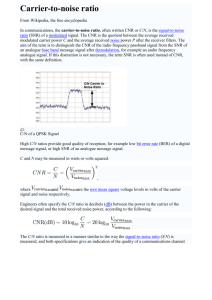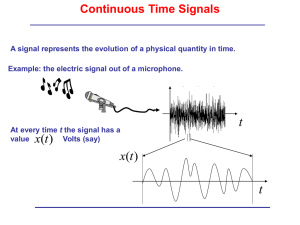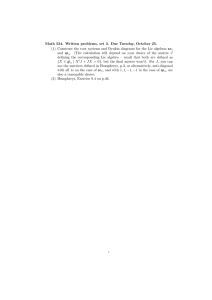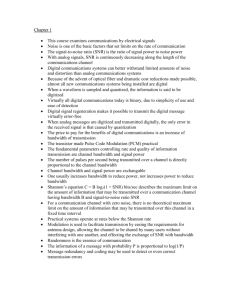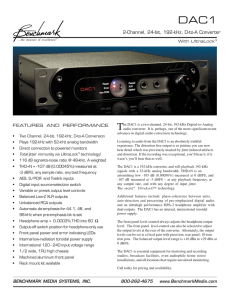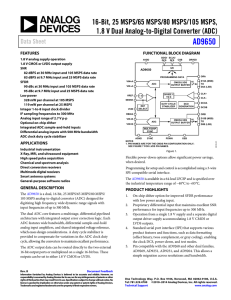Apples and Oranges—Correlating Specifications Requires Common Test Conditions Q
advertisement
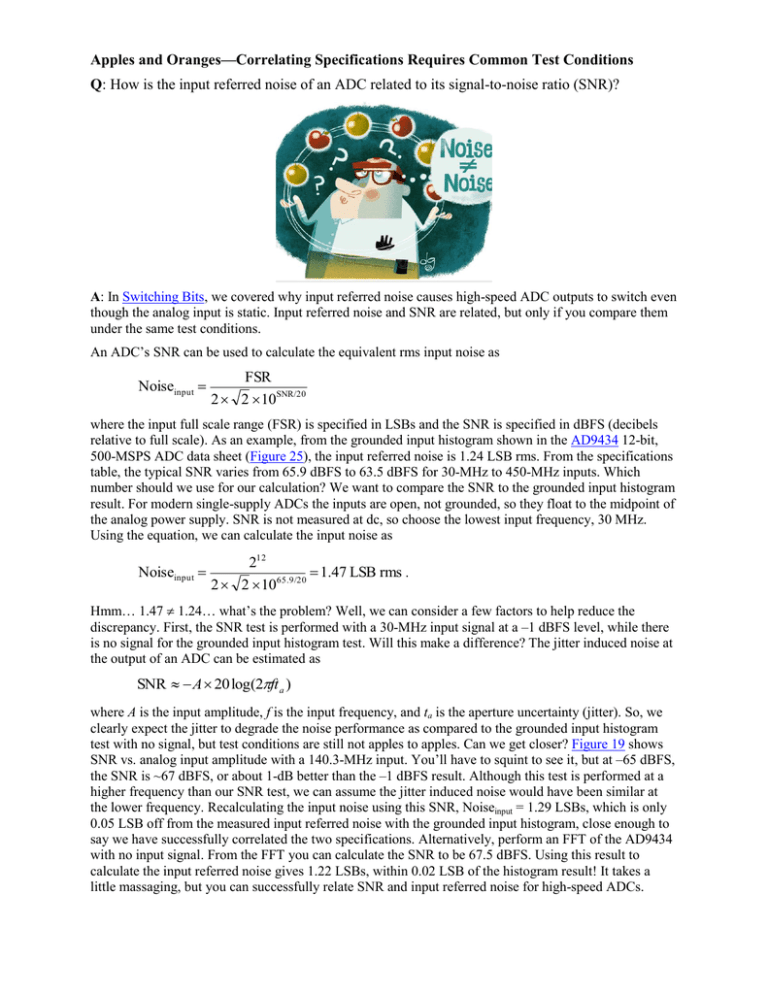
Apples and Oranges—Correlating Specifications Requires Common Test Conditions Q: How is the input referred noise of an ADC related to its signal-to-noise ratio (SNR)? A: In Switching Bits, we covered why input referred noise causes high-speed ADC outputs to switch even though the analog input is static. Input referred noise and SNR are related, but only if you compare them under the same test conditions. An ADC’s SNR can be used to calculate the equivalent rms input noise as Noiseinput FSR 2 2 10SNR/20 where the input full scale range (FSR) is specified in LSBs and the SNR is specified in dBFS (decibels relative to full scale). As an example, from the grounded input histogram shown in the AD9434 12-bit, 500-MSPS ADC data sheet (Figure 25), the input referred noise is 1.24 LSB rms. From the specifications table, the typical SNR varies from 65.9 dBFS to 63.5 dBFS for 30-MHz to 450-MHz inputs. Which number should we use for our calculation? We want to compare the SNR to the grounded input histogram result. For modern single-supply ADCs the inputs are open, not grounded, so they float to the midpoint of the analog power supply. SNR is not measured at dc, so choose the lowest input frequency, 30 MHz. Using the equation, we can calculate the input noise as 212 Noiseinput 1.47 LSB rms . 2 2 1065.9/20 Hmm… 1.47 1.24… what’s the problem? Well, we can consider a few factors to help reduce the discrepancy. First, the SNR test is performed with a 30-MHz input signal at a –1 dBFS level, while there is no signal for the grounded input histogram test. Will this make a difference? The jitter induced noise at the output of an ADC can be estimated as SNR A 20 log(2ft a ) where A is the input amplitude, f is the input frequency, and ta is the aperture uncertainty (jitter). So, we clearly expect the jitter to degrade the noise performance as compared to the grounded input histogram test with no signal, but test conditions are still not apples to apples. Can we get closer? Figure 19 shows SNR vs. analog input amplitude with a 140.3-MHz input. You’ll have to squint to see it, but at –65 dBFS, the SNR is ~67 dBFS, or about 1-dB better than the –1 dBFS result. Although this test is performed at a higher frequency than our SNR test, we can assume the jitter induced noise would have been similar at the lower frequency. Recalculating the input noise using this SNR, Noiseinput = 1.29 LSBs, which is only 0.05 LSB off from the measured input referred noise with the grounded input histogram, close enough to say we have successfully correlated the two specifications. Alternatively, perform an FFT of the AD9434 with no input signal. From the FFT you can calculate the SNR to be 67.5 dBFS. Using this result to calculate the input referred noise gives 1.22 LSBs, within 0.02 LSB of the histogram result! It takes a little massaging, but you can successfully relate SNR and input referred noise for high-speed ADCs.

